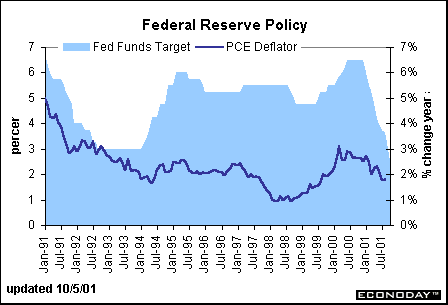<% if ((ihtmlinclude AND 65536) = 65536) then %>
By Evelina M. Tainer, Chief Economist, Econoday
The Federal Reserve reduced its federal funds rate target 50 basis points on Tuesday at its regularly scheduled policy
meeting. This brought the funds rate target to 2.5 percent, its lowest level since early 1962. Given the latest figures on inflation,
measured by the deflator for personal consumption expenditures, the real federal funds rate is not quite zero yet but
approaching it. This points to a very accommodative monetary policy, although not quite as aggressive as it was in the early
1990s when the real rate was indeed zero for a few months.
It is important to keep in mind that Federal Reserve action impacts the economy with a lag. We are yet to feel the positive
impact of 400 basis points of cumulative rate cuts over the past year. Many analysts suggest that monetary stimulus may not be
as helpful as in the past and that the Fed may need to be more active. To some extent, lowering interest rates when excess
capacity in factories exists, is not very useful. Also, when consumer and business confidence is down dramatically, and
uncertainty about conditions is high, lower interest rates will have a limited impact. Most analysts expect the Fed to reduce
rates again before year-end.
|
|||
